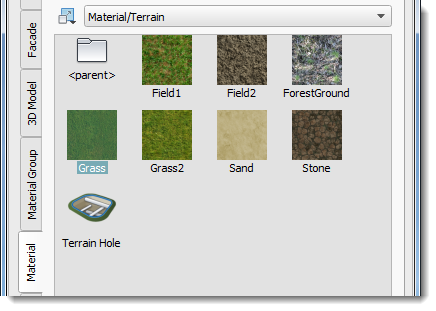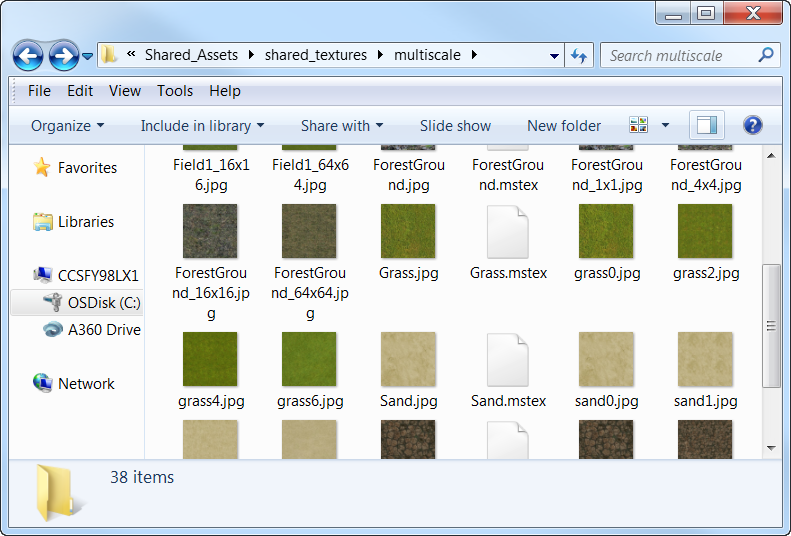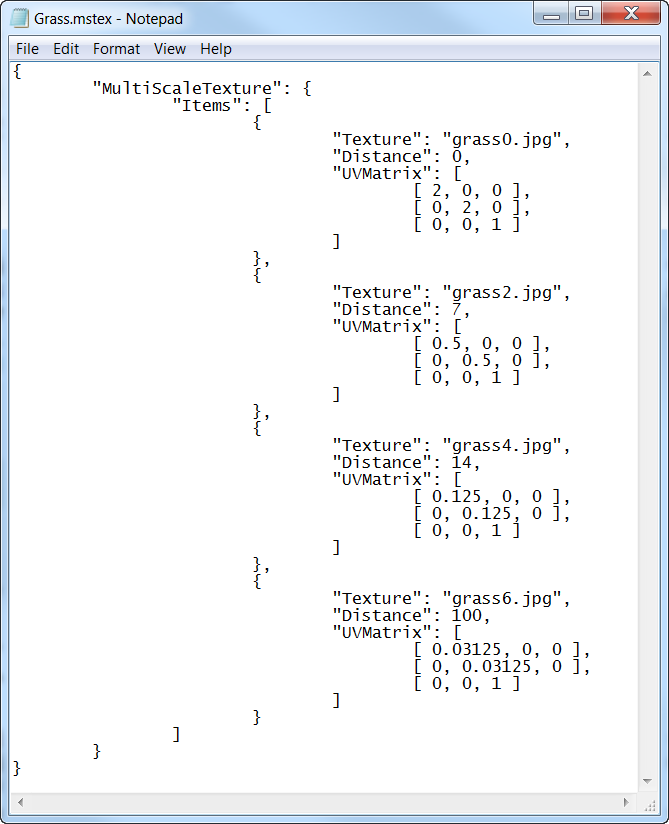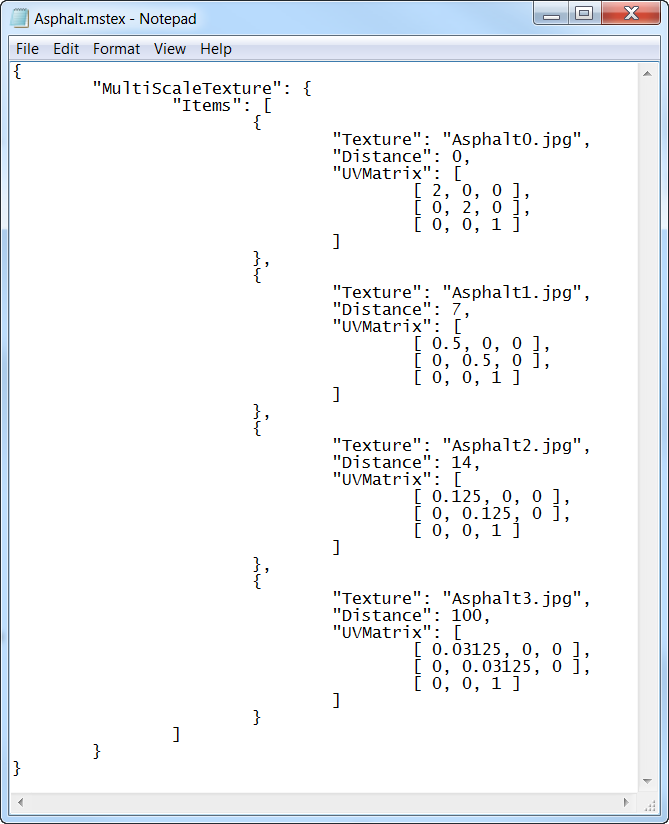To add multi-scale textures as material styles
Add multi-scale textures to the material style catalog using a series of related textures that represent different levels of detail. Use your multi-scale textures in InfraWorks as materials to improve texture visibility at different zoom distances.

Add your own multi-scale textures as material styles
Locate or create four .JPG images of a material at different levels of detail. Each image should be square, and have a resolution that is a power of two, such as 512 x 512 or 1024 x 1024. As a best practice, we recommend using images at 1024 x 1024 resolution.
For example, if you want to create a new multi-scale texture material style that represents asphalt, you would create four different asphalt images with numbered file names.
Note: Make sure to also create a .JPG image that can be used as a thumbnail in the material style catalog. In the image below, "Asphalt.jpg" is the image that will become the material thumbnail.Navigate to C:\ProgramData\Autodesk\InfraWorks\Resources\LocalLibrary\Shared_Assets\shared_textures\multiscale on your local system. This is where InfraWorks stores multi-scale textures. You can review existing multi-scale textures here, and also add new multi-scale textures to this location as well.
Each multi-scale texture is composed of multiple .JPG image files with different levels of detail, as well as an associated .MSTEX file. For example, Grass.mstex is associated with Grass.jpg, grass0.jpg, grass2.jpg, grass4.jpg, and grass6.jpg.

Open a .MSTEX file, such as Grass.mstex, in a text-editing application. You can see that the "MultiScaleTexture" is actually composed of several "Items," and that each item has a .JPG texture corresponding to the .JPG images found in your C:\ProgramData\Autodesk\InfraWorks\Resources\LocalLibrary\Shared_Assets\shared_textures\multiscale folder.

Replace the .JPG texture file names in the .MSTEX document with the file names that correspond to your new multi-scale texture material style, and save the .MSTEX file with a new name that exactly corresponds to the name of your thumbnail image for the new material style.

You can modify the blending distance and image scaling settings for each texture in your .MSTEX file using the Distance and UVMatrix fields.
- The "Distance" setting represents view distance (in meters) from the texture. For example, a Distance of 7 represents a camera distance of 7 meters from the texture.
- It is not recommended to adjust UVMatrix settings unless you are familiar with texture coordinates, fugues, and noise textures.
